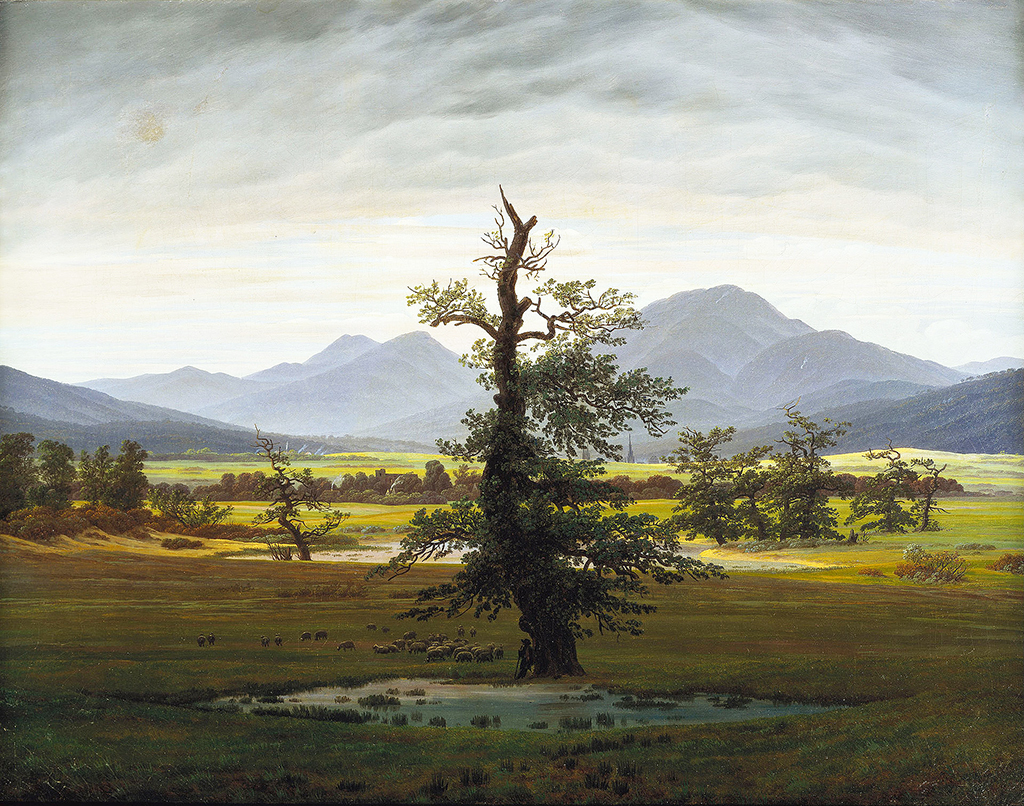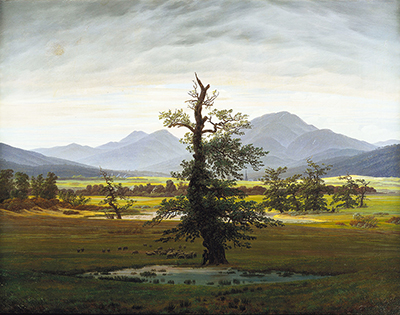Also called the Solitary Tree, the Lonely Tree is a painting by Caspar David Friedrich that he did in 1822. The oil on canvas painting was part of a pair that art patron Joachim Heinrich Wilheim Wagener commissioned.
He wanted a 'times of day' diptych where the pieces showed the morning and evening landscapes. The Lonely Tree depicted a beautiful morning in a village in the countryside. The other painting was Moonrise by the Sea. Claude Lorrain was the inspiration for the two pieces.
The Solitary Tree
At the centre of this painting is an old oak tree, standing on its own. It occupies most of the foreground, fitting the title perfectly. The tree shows signs of old age, but it still has green branches extending from the robust trunk. Its tiny leaves indicate that the tree has life left in it. The trunk stretches up into the clouds, its bare truck seemingly touching the sky. Above, the slightly grey clouds gather to cast a slimmer of darkness. Below the tree is a small pond with plants inside and around it. A lone shepherd holding a cane leans against the tree trunk, as he watches a herd of sheep a short distance away.
In the background, another water body is visible, this one a tad bigger. Trees that are significantly smaller than the oak spread out around the landscape. Farther back, a gothic village is barely visible. Bushes and trees surround it. Beyond the village is a mountainous terrain where hills seem to grow into mountains, piling on each other. They are in a bluish-grey hue that creates beautiful, romantic scenery. A clear blue sky completes the panoramic view.
Standing Alone
Historians and artists have put forward several interpretations of The Lonely Tree. A dominant one is loneliness. The oak tree is a central figure in the painting, and that makes it the core subject. From its weathered look, the tree seems to have been in the ground for a long time. It has been through different seasons and judging from its bare crown, some hard ones. Yet, somehow, the mighty oak manages to produce healthy branches and leaves. It still provides shelter to the shepherd and his flock. The Solitary Tree is a symbol of resilience born of perseverance. At the bottom, the oak tree is an epitome of strength, but it fades as the eyes move up. Despite the strength, loneliness has affected the tree.
Another picture from this scene is that the tree is a connection between heaven and earth. It's deeply rooted into the ground, and the tip of its trunk shoots to the sky with two branches forming a cross-like figure. The German painter gained prominence as an expert of the Romantic mood, and The Lonely Tree is one piece in the genre. He did something different in this painting by making the tree the focal point, the protagonist, rather than the background subject as was typical. Wagener donated the artwork to the Berlin National Gallery in 1861, which contributed to its founding collection.





